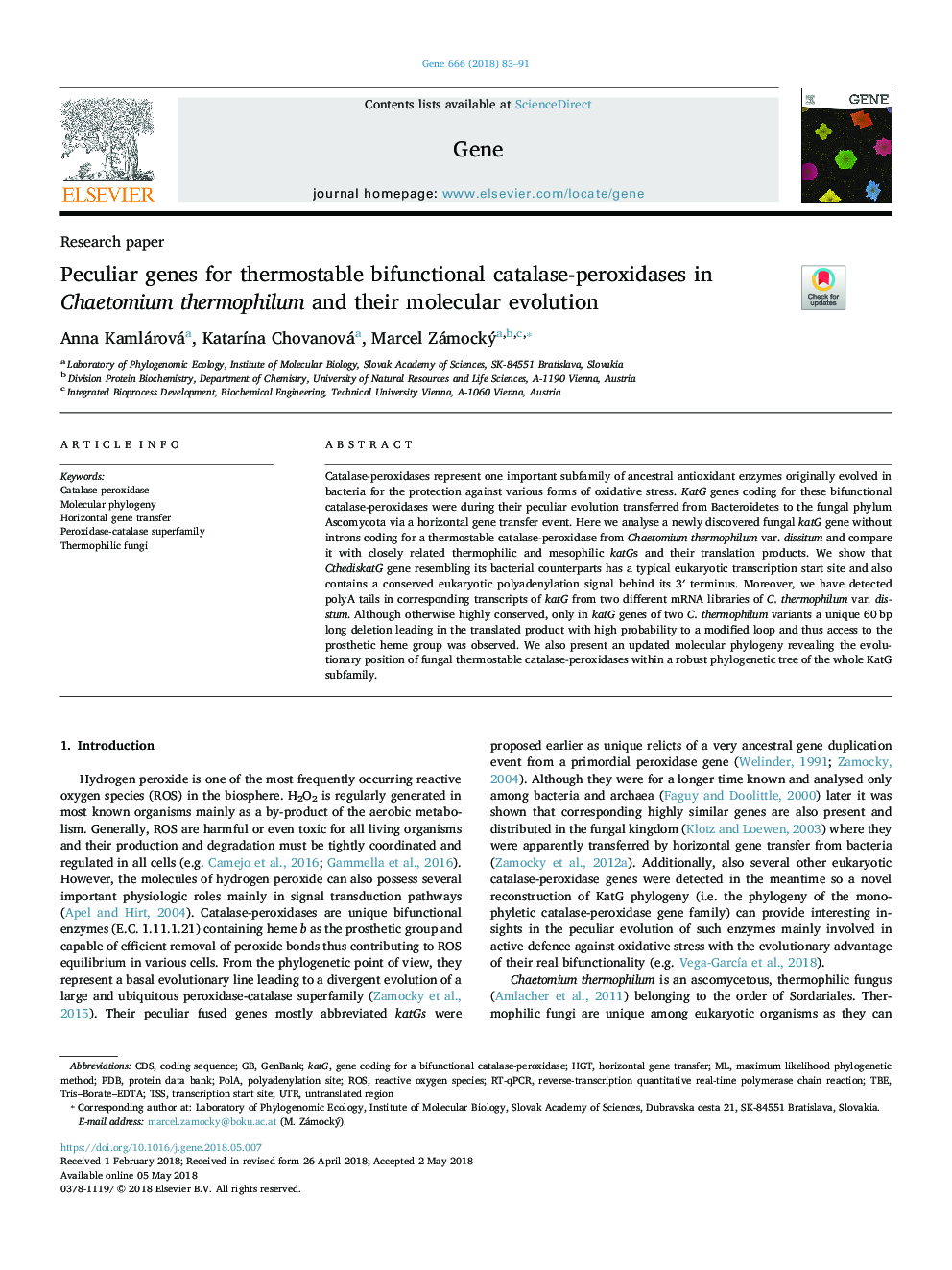| Article ID | Journal | Published Year | Pages | File Type |
|---|---|---|---|---|
| 8644866 | Gene | 2018 | 9 Pages |
Abstract
Catalase-peroxidases represent one important subfamily of ancestral antioxidant enzymes originally evolved in bacteria for the protection against various forms of oxidative stress. KatG genes coding for these bifunctional catalase-peroxidases were during their peculiar evolution transferred from Bacteroidetes to the fungal phylum Ascomycota via a horizontal gene transfer event. Here we analyse a newly discovered fungal katG gene without introns coding for a thermostable catalase-peroxidase from Chaetomium thermophilum var. dissitum and compare it with closely related thermophilic and mesophilic katGs and their translation products. We show that CthediskatG gene resembling its bacterial counterparts has a typical eukaryotic transcription start site and also contains a conserved eukaryotic polyadenylation signal behind its 3â² terminus. Moreover, we have detected polyA tails in corresponding transcripts of katG from two different mRNA libraries of C. thermophilum var. disstum. Although otherwise highly conserved, only in katG genes of two C. thermophilum variants a unique 60â¯bp long deletion leading in the translated product with high probability to a modified loop and thus access to the prosthetic heme group was observed. We also present an updated molecular phylogeny revealing the evolutionary position of fungal thermostable catalase-peroxidases within a robust phylogenetic tree of the whole KatG subfamily.
Keywords
Related Topics
Life Sciences
Biochemistry, Genetics and Molecular Biology
Genetics
Authors
Anna Kamlárová, KatarÃna Chovanová, Marcel Zámocký,
